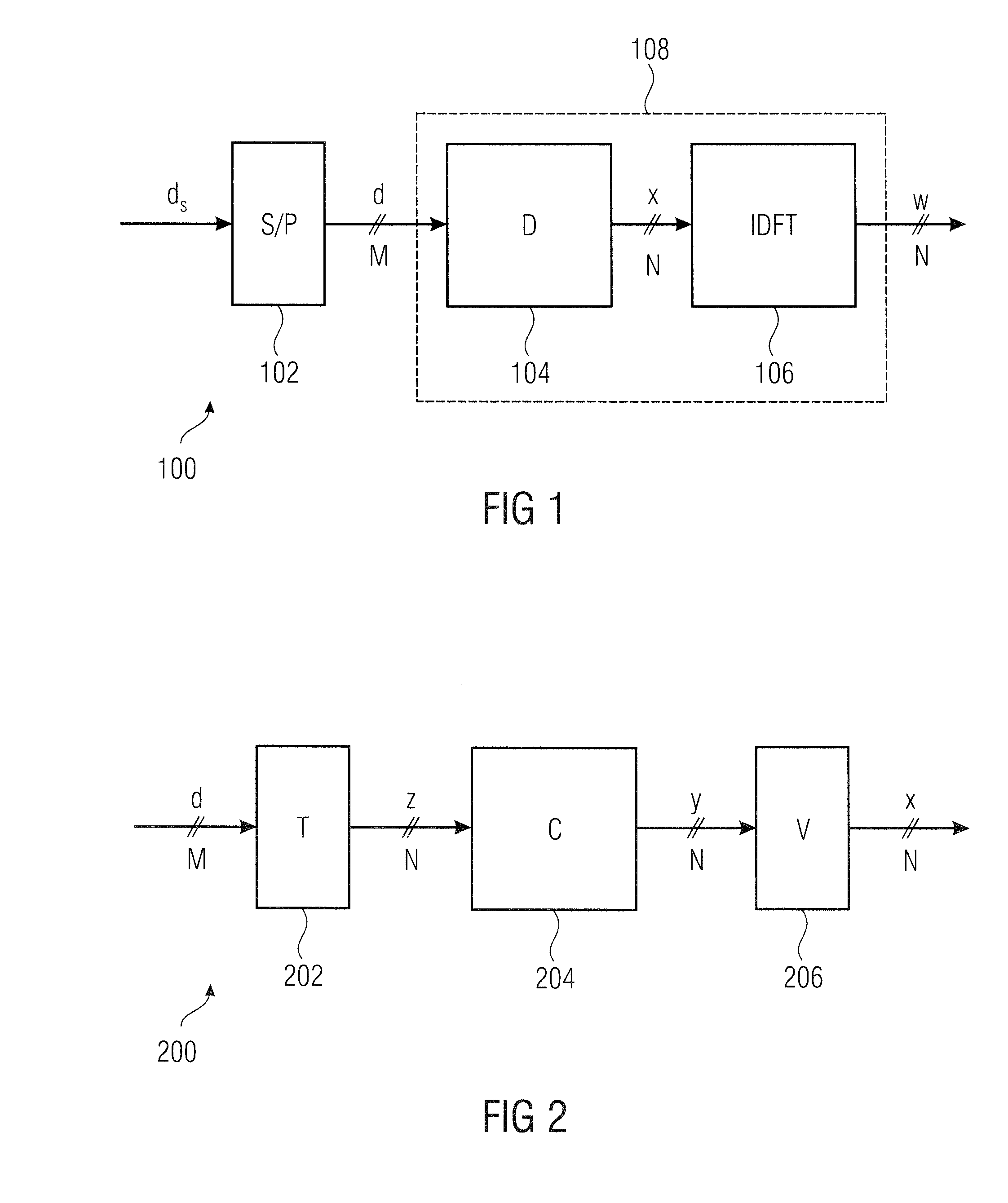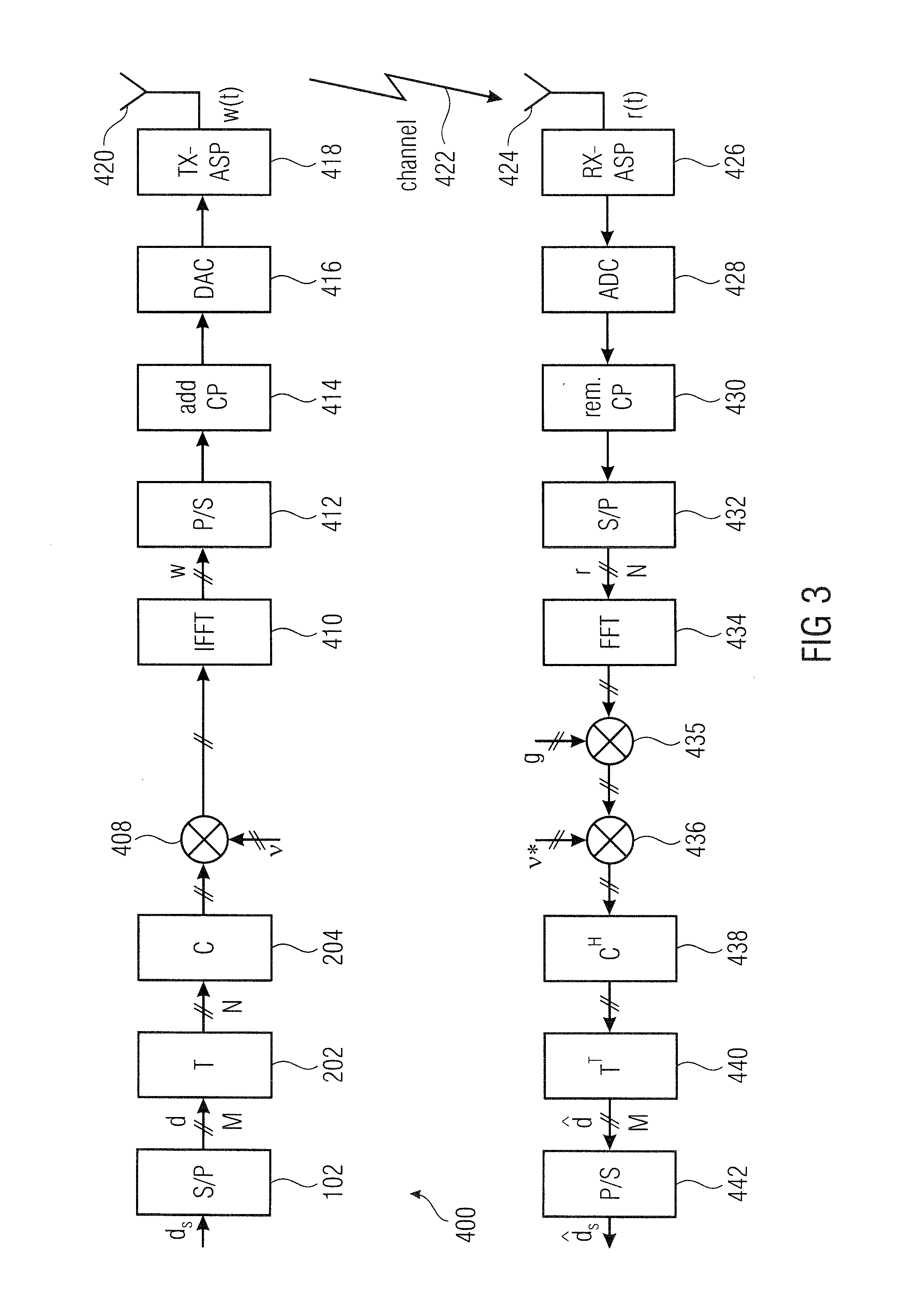Method for spreading a plurality of data symbols onto subcarriers of a carrier signal
- Summary
- Abstract
- Description
- Claims
- Application Information
AI Technical Summary
Benefits of technology
Problems solved by technology
Method used
Image
Examples
Embodiment Construction
[0163]Embodiments of the invention relate to novel spreading methods (novel spreading matrices and non-matrix-based spreading methods), which are optimized with respect to performance ability, signal statistics, adaptivity and / or efficient implementation.
(First Aspect—Novel Matrix Spreading Methods)
[0164]Embodiments of the invention according to the first aspect relate to novel spreading methods, which have not been considered in conventional technology, yet. The spreading methods are described by means of a spreading matrix, respectively. For further description, the spreading matrix D is split into three matrices T, C and V. We have:
D=VCT.
[0165]T is a matrix of the dimension N×M. It determines “spreading allocation” and will be referred to as “block spreading allocation matrix”, hereafter. C, the “base spreading matrix”, has the dimension N×N (square matrix) and defines “basis spreading”. N will also be referred to as “spreading length, hereafter. V is a diagonal matrix of the di...
PUM
 Login to View More
Login to View More Abstract
Description
Claims
Application Information
 Login to View More
Login to View More - R&D
- Intellectual Property
- Life Sciences
- Materials
- Tech Scout
- Unparalleled Data Quality
- Higher Quality Content
- 60% Fewer Hallucinations
Browse by: Latest US Patents, China's latest patents, Technical Efficacy Thesaurus, Application Domain, Technology Topic, Popular Technical Reports.
© 2025 PatSnap. All rights reserved.Legal|Privacy policy|Modern Slavery Act Transparency Statement|Sitemap|About US| Contact US: help@patsnap.com



